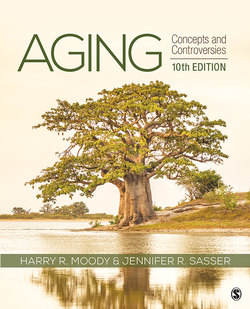Читать книгу Aging - Harry R. Moody - Страница 31
На сайте Литреса книга снята с продажи.
Mechanisms of Physical Aging
ОглавлениеWe sometimes think of aging as a process applying uniformly to the whole organism, yet physiological studies show that different parts of the body age at different rates. For example, white blood cells die and are replaced within 10 days, but red blood cells last 120 days. The stem cells that produce all blood cells reveal no signs of aging at all. Cells in the brain last as long as the body lives; once the brain is fully formed, neurons do not exhibit significant cell division, and unless damaged by illness, they remain largely intact. But apart from long-living stem cells and brain cells, most parts of the body are constantly subjected to damage and repair. The mechanisms that contribute to this process of aging include wear and tear, the effects of free radicals, and the decline of the immune system.
